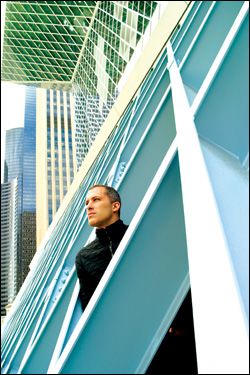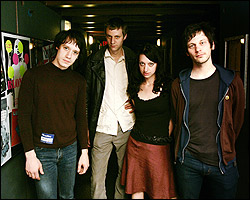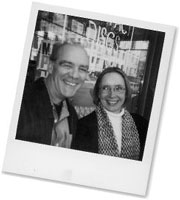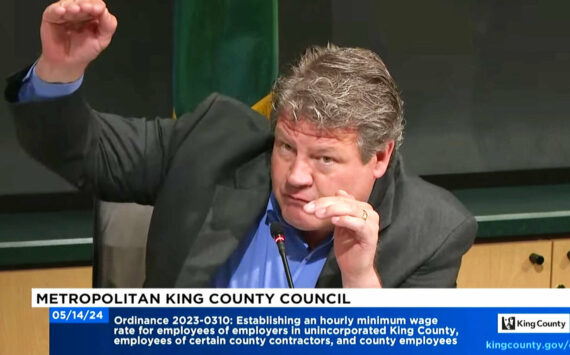At the Public Library Association’s 10th National Conference last February, Seattle was a very talked-about city, and not just because the meetings were at the Washington State Convention & Trade Center. As libraries across the nation— including ours—suffer budget cuts resulting in decreased hours, staff, and materials, we’re about to open the most visually exciting one in the country. But it wasn’t the gleaming, angular form of the new Central Library that the conference’s 10,000 librarians were interested in. They crave function. Librarians today are competing with convenient online tools and a resulting glut of information. Change is past due, and given the opportunity to start from scratch with a new building, the Seattle Public Library system is about to organize and offer information in a fundamentally new way.
One Public Library Association panel discussion included Jill Jean, director of Central Library services in Seattle. There was a collective gasp among hundreds in the crowded room when she spoke of the new Central Library’s Books Spiral, a ramped room spanning four floors that puts most of the nonfiction collection in a continuous spread, enabling what librarians call “serendipity in the stacks.” The gasp was louder when she announced that, in addition to free wireless Internet service throughout the building, the Central Library would have 500 computers, compared to 70 before. There was more surprise and concern when Jean discussed how most Seattle Central librarians would, as much as possible, be generalists instead of experts in small collections. As she explained the Star Trek–esque Vocera wireless communication system that will allow librarians to be desk-free, unruly chatter broke out. This was big.
Disquiet has been in the air ever since the preliminary design models of the library were presented in 1999. Uncertainty has been a common response; questions range from the practical (“How will they wash all those windows?”) to the skeptical (“How will that lopsided thing withstand an earthquake?”). Many people are just concerned with how the visually loud building will fit into a nondescript patch of landscape, between Fourth and Fifth avenues and Madison and Spring streets, in an architecturally nondescript city. Dutch “starchitect” Rem Koolhaas, whose Office for Metropolitan Architecture (OMA) designs elaborate private homes and high-tech Prada stores in the highest-rent districts of the globe, is at the forefront of the five-year, $165 million project, so there’s a tendency for practical Seattleites to doubt that the sparkling rhombus shapes that glare on all sides of the building actually have a function. Throughout the conception and life of the building, which opens to the public this Sunday, May 23, there have been concerns. But for City Librarian Deborah Jacobs, who has headed the project since the beginning, the issues of utmost importance have remained the same: literacy, community, and access to information.
A self-described social and political activist, Jacobs took steps to ensure that the library could accommodate the inevitable next wave of technology. She, the library advisory board, and the architects conducted brainstorming sessions with Seattle’s leading thinkers. But Jacobs also insisted that the level of technology should serve the greatest common denominator. What good is the most advanced search tool if only the most advanced patrons can use it?

The Central Library, viewed from Madison Street and Fourth Avenue. (Seattle Public Library)
“A lot of the early ideas for technology in the building went by the wayside,” says Sam Miller, the principal at LMN Architects, the local firm that partnered with OMA on the design. “The technology that has stuck is really pretty basic—robust technology that, with a couple exceptions, is tried and true.”
Joshua Ramus, Koolhaas’ partner architect, is fond of using the word “dumb” to describe not just the building but its services. He doesn’t mean stupid, he means simple. The library might inspire awe, but there is nothing about the building that can be seen as fantastical, futuristic, or superfluous. Inside and out, two things define the structure: the information and services it must provide, and the city’s building codes.
“There’s no design,” says Ramus firmly and plainly. “If there’s an aesthetic to the library, the aesthetic is Dutch.” Dutch with a Northwestern sensibility. Although he looks and almost sounds as European as Koolhaas, Ramus is a local boy. In fact, OMA was alerted to the project in an altogether provincial manner: Ramus’ mother called her son’s office in Rotterdam from her home on Bainbridge Island to tell him that his hometown’s library board was in search of architects. Like all mothers, she just wanted her son to be close to home.
If you’ve been to Amsterdam—or even gridlike New York, which was at one time New Amsterdam—you remember the row houses. Tall, thin buildings are lined up close, each distinct and each performing a dedicated task for inhabitants. That kind of arrangement is a hallmark of OMA’s work. Functions are separated into distinct spaces, and each space addresses only its designated purpose. Instead of vertical spaces lined up, Seattle’s Central Library has five horizontal platforms, one each for the specific needs of administration, information organization, community space, staff and patron interaction, and parking. To ensure that each platform would independently serve its task, OMA and LMN broke into five teams, and each designed an area without worrying about how the parts would synthesize. Webbed together by fluid in-between spaces—a Living Room, a Reading Room, a Children’s Center, and an interaction space called the Mixing Chamber—the building is whole. Elements like Dewey decimal–labeled floor tiles and vibrant floor coverings that wrap up and over desks blur the line between the building and the information and create an instinctual experience.
Through the lens of current American architecture, which is often overly concerned with compatibility and imminent resale, the ordered design of the library might seem limiting. But in addressing the needs of the library’s communities and eschewing trends, OMA and LMN’s rigorous plan allows for order, exploration, and endurance. The sensible Dutch aesthetic even allowed the architects to save money. An example is riveted all over the exterior; Ramus claims that $2 million was saved by leaving screws exposed on the external walls. Where perhaps other architects would have found it necessary to conceal the hardware, Ramus says OMA and LMN were not concerned with “hiding the presence of hand.”
Can a building this “dumb” and practical aspire to something as grand as quelling Seattle’s identity crisis? Can the library, with European sensibilities and surprising views of Puget Sound and Mount Rainier, allow Seattle to be both world-class and Walden? Can we now, please, stop talking about how we’re all going to move to San Francisco or New York?
For British author Jonathan Raban, who has lived in Seattle for about 15 years and often writes about life here for European publications as well as in his own novels, the obvious comparison is the Guggenheim Museum in Bilbao. “Frank Gehry sort of put Bilbao on the map,” says Raban. “All sorts of people who had never thought of going to Bilbao or even spared a second thought for the place are aware of it now because of his extraordinary, famous piece of architecture. But of course, people visit museums. A public library—any public library, however splendid—is a less certain public icon to the outside than any museum, however undistinguished. So if Koolhaas wanted to put Seattle on the map, he’s got his work cut out for him.”

Inside, fluid, in-between spaces. This is the Living Room.
Still, in a city where tourist attractions of the urban variety are equaled if not overwhelmed by natural ones, a library this distinct might become an essential site, even for visitors. If it doesn’t put Seattle on the map, maybe it will at least inspire other cities to put libraries in their visitor’s guides.
As for their hopes for the library, Ramus and Jacobs fall back on what they say was always the hypothetical litmus test: Will this building work for a 16-year-old Laotian immigrant? Aside from that, the architect will only modestly offer that the Central Library will at least add another block to the maze of interior escalators and elevators that allows downtown walkers another option for navigating uphill from First Avenue. And Jacobs, with all her earnest fighting for greatest common denominators, will always be passionate about knowledge, wherever it’s housed. “My religion is libraries,” she says. “I believe that libraries make the world a better place.”
Either way, we are elevated.








